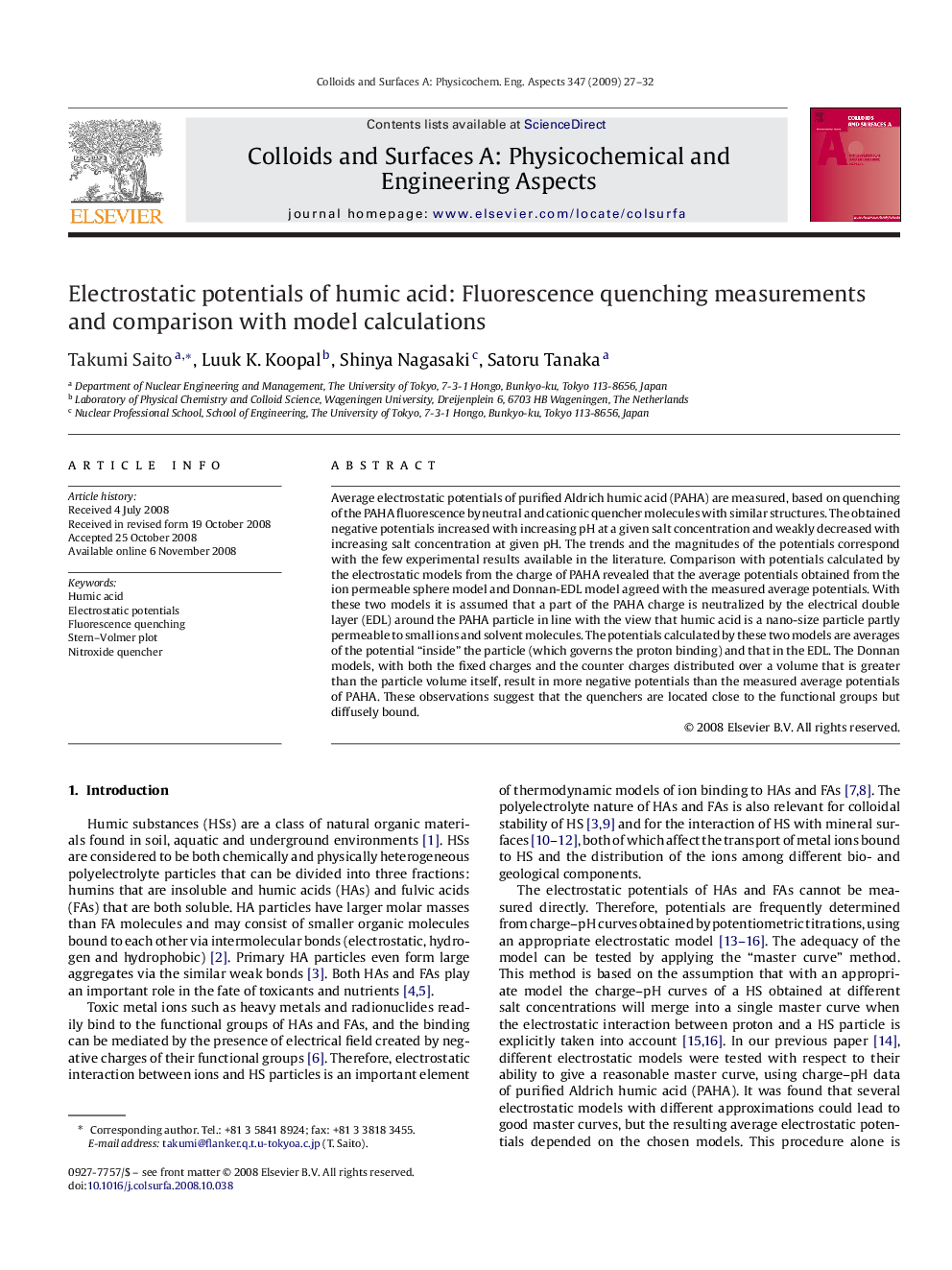| Article ID | Journal | Published Year | Pages | File Type |
|---|---|---|---|---|
| 595829 | Colloids and Surfaces A: Physicochemical and Engineering Aspects | 2009 | 6 Pages |
Average electrostatic potentials of purified Aldrich humic acid (PAHA) are measured, based on quenching of the PAHA fluorescence by neutral and cationic quencher molecules with similar structures. The obtained negative potentials increased with increasing pH at a given salt concentration and weakly decreased with increasing salt concentration at given pH. The trends and the magnitudes of the potentials correspond with the few experimental results available in the literature. Comparison with potentials calculated by the electrostatic models from the charge of PAHA revealed that the average potentials obtained from the ion permeable sphere model and Donnan-EDL model agreed with the measured average potentials. With these two models it is assumed that a part of the PAHA charge is neutralized by the electrical double layer (EDL) around the PAHA particle in line with the view that humic acid is a nano-size particle partly permeable to small ions and solvent molecules. The potentials calculated by these two models are averages of the potential “inside” the particle (which governs the proton binding) and that in the EDL. The Donnan models, with both the fixed charges and the counter charges distributed over a volume that is greater than the particle volume itself, result in more negative potentials than the measured average potentials of PAHA. These observations suggest that the quenchers are located close to the functional groups but diffusely bound.
